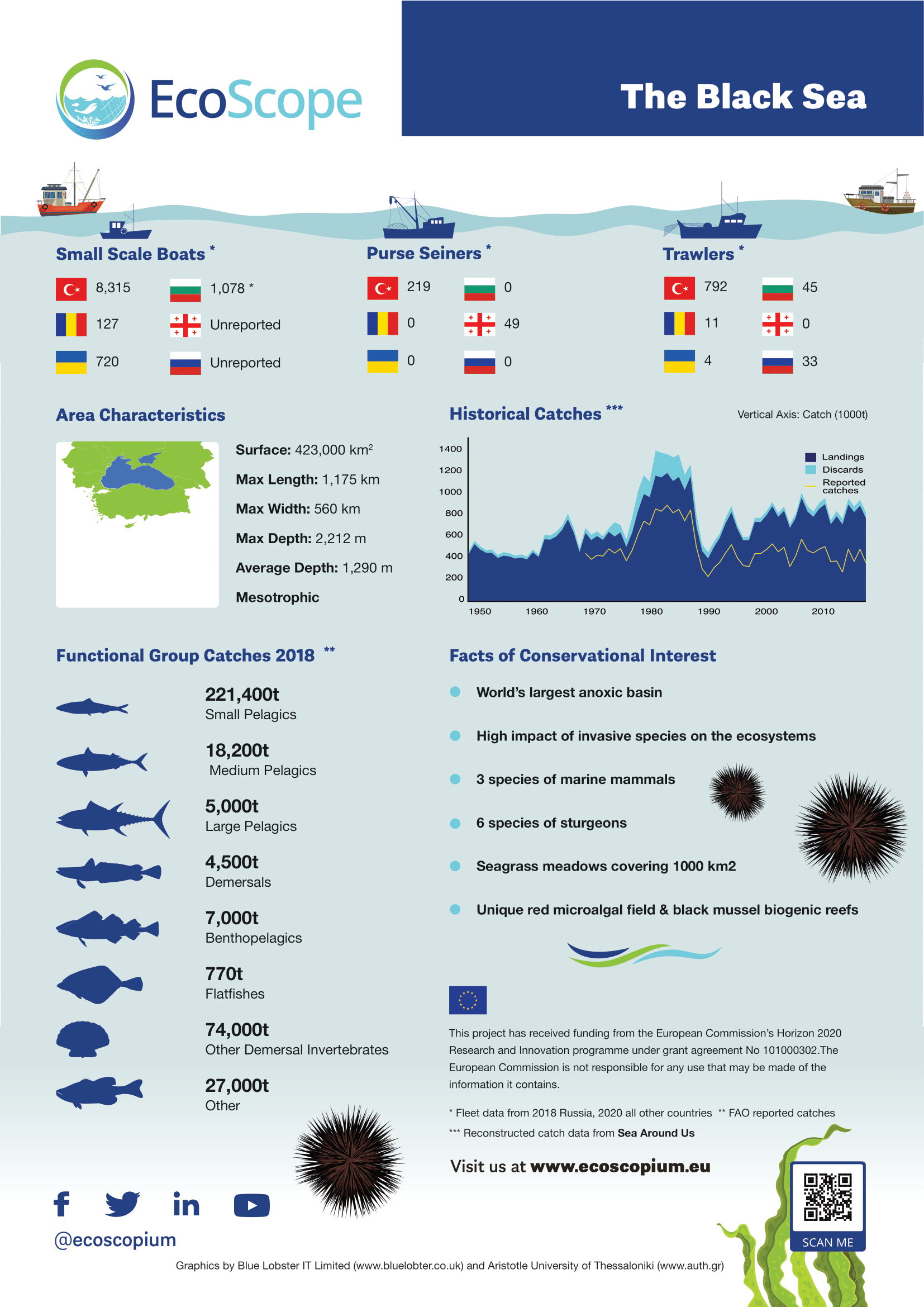Black Sea
The Black Sea is a marginal sea located northeast of the Mediterranean Sea, connected to Aegean Sea via the Turkish Straits. It receives substantial freshwater inputs from major rivers and is relatively deep in its centre. It is the world’s largest body of water with a meromictic basin, where deep waters do not mix with the oxygenated surface layer. Consequently, over 90% of its deep-water volume is anoxic, with circulation patterns shaped largely by basin topography and fluvial inputs, creating a strongly stratified vertical structure. Over the past decades, the basin has undergone major trophic transformations. The most notable was the introduction of the invasive ctenophore Mnemiopsis leidyi from the western Atlantic which led to a dramatic decline in commercially important small pelagic fishes, like the European anchovy, through food competition and predation on eggs and juveniles. Black Sea fisheries are relatively well studied in certain areas, with some commercial fish and invertebrate stocks assessed using catch-based and other data-limited methods.


